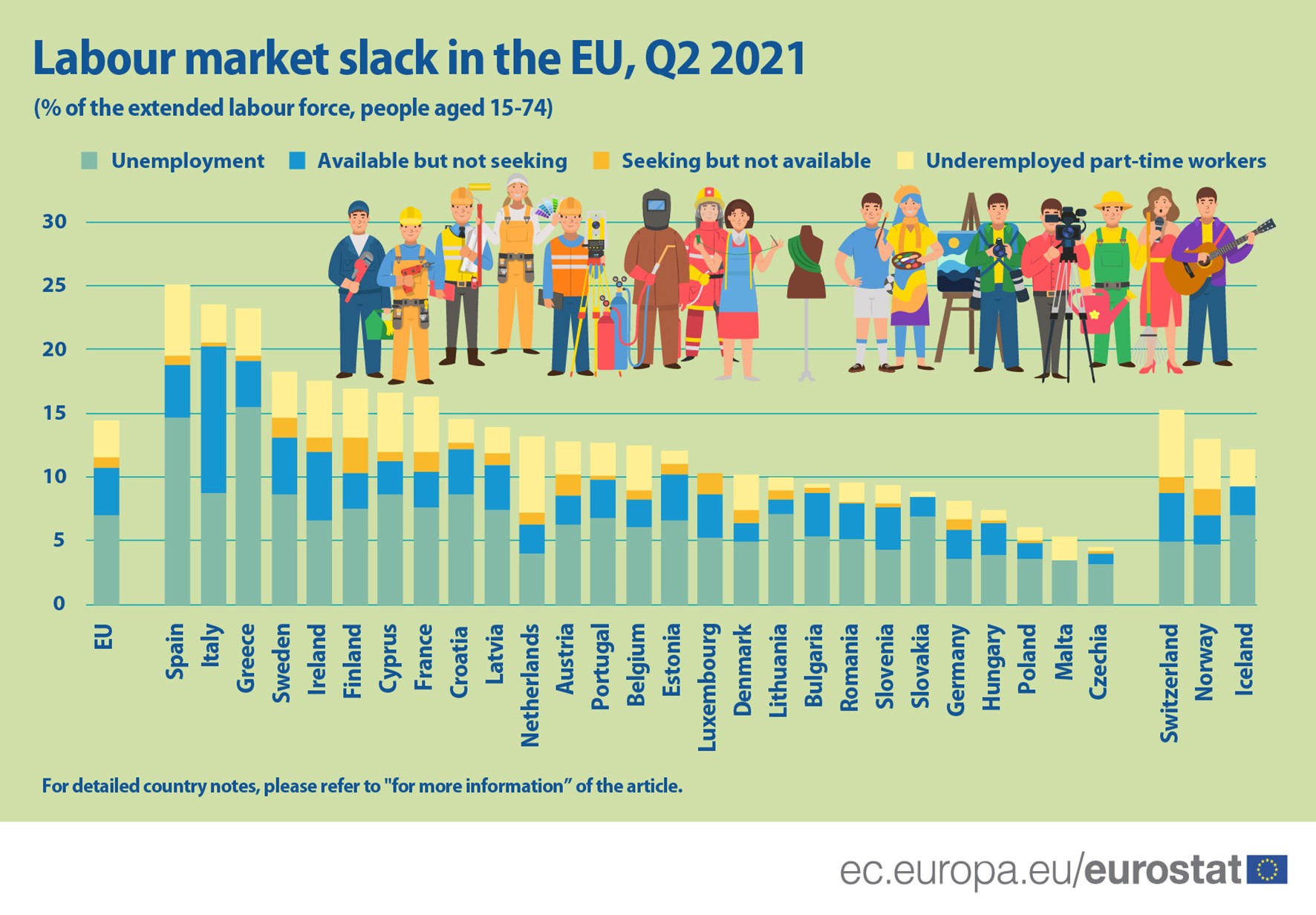In the EU, the unmet demand for employment, the labour market slack, amounted to 14.5% of the extended labour force (aged 15-74 years) in the second quarter of 2021.
A major component of the labour market slack is unemployment. In the second quarter of 2021, unemployed people accounted for almost half of the labour market slack (7.0% of the extended labour force in the EU). The remaining groups making up the labour market slack were: ‘persons available to work but not seeking employment’ (3.8% of the extended labour force), ‘underemployed part-time workers’ (2.9%) and ‘persons seeking work but not immediately available’ (0.8%).
Source dataset: lfsi_sla_q
Among the EU Member States, the labour market slack was highest in Spain (25.1% of the extended labour force), Italy (23.6%) and Greece (23.2%). In contrast, the lowest levels of labour market slack were observed in Czechia (4.6%), Malta (5.8%) and Poland (6.2%).
Unemployment was the largest component of the labour market slack for all the EU Member States in the second quarter of 2021, except for Italy and the Netherlands. In Italy, ‘people available to work but not seeking employment’ accounted for 11.5% of the extended labour force and made the largest contribution to the labour market slack in that country. In the Netherlands, ‘underemployed part-time workers’ (6.0% of the extended labour force) made the largest contribution to the labour market slack in the country.
For more information:
- Luxembourg: data on ‘underemployed part-time workers’ not available. Bulgaria, Estonia, Croatia, and Slovakia: data on ‘underemployed part-time workers’ with low reliability. Malta: data on ‘available but not seeking’ not available due to very low reliability. Malta, Slovakia and Iceland: data on ‘seeking but not available’ not available due to very low reliability. Estonia, Croatia, Slovenia and Romania: data on ‘seeking but not available’ with low reliability.
- The “extended labour force” is made of employed people (including namely the underemployed part-time workers), unemployed people as well as people available to work but not seeking employment, and people seeking employment but not available to work.
- This article uses quarterly and seasonally adjusted Labour Force Survey (LFS) data.
- Eurostat Statistics Explained article on the EU labour market slack
- Eurostat website section dedicated to the EU Labour Force Survey
- Eurostat database of EU Labour Force Survey
To contact us, please visit our User Support page.
For press queries, please contact our Media Support.


